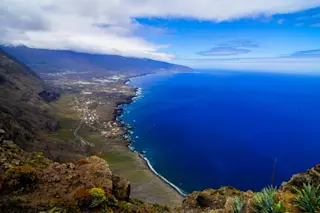The Canary Islands, an autonomous community of Spain west of Morocco, spreads more than 300 miles across the Atlantic in an archipelago akin to Hawaii. Like the Aloha State, the Canaries were born from volcanoes — but researchers had debated exactly how.
When magma erupted from a crack in the ocean floor off El Hierro, the youngest, westernmost island, local volcanologist Vicente Soler headed out to sea, looking for answers. He found strange black rocks, some as large as soccer balls, floating in the bubbling, sulfurous seawater. He scooped them up with a fishing net.
It’s rare, but not unprecedented, for frothy magma to harden into rock so light it floats. But trapped inside the floating rocks was something even more unusual: quartz minerals and banding patterns found in sedimentary rock, which magma typically melts.
The banded sediments contained tiny fossils of single-celled creatures, says Uppsala University volcanologist Valentin Troll, ...















